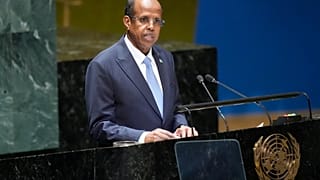USA
U.S. President Donald Trump’s new tariff rates of up to 41% on U.S. imports from dozens of countries drew expressions of relief Friday from some countries that negotiated a deal or managed to whittle them down from rates announced in April.
Others expressed disappointment or frustration over running out of time after hitting Trump’s Aug. 1 deadline for striking deals with America’s trading partners.
“The tariff tsunami hit from Trump and now you're starting to see rubber meet the road in terms of what some of these tariffs actually look like,” said Dan Ives, a senior equity analyst with Wedbush Securities.
"And you combine that with some softer economic news the market is a little nervous about this combo one two punch."
The reaction from financial markets was muted.
Benchmarks fell in Asia, with South Korea’s Kospi dropping nearly 4% after the tariff rate for the U.S. ally was set at 15%.
The U.S. dollar weakened against the Japanese yen, trading at more than 150 yen per dollar.
Worries on Wall Street about a weakening economy were heavily reinforced by Friday’s sharply-lower-than-expected report on U.S. job growth. Labor Department revisions shaved a stunning 258,000 jobs off May and June payrolls.













01:32
Trump, Xi meet in person as US and China move to ease trade tensions
Go to video
Mali slaps visa bond on US travelers in retaliation
01:21
Trump threatens new 100% tariff on Chinese imports
01:50
World Trade Organization raises 2025 global trade growth forecast from 0.9% to 2.4%
02:05
After 25 years, US-Africa trade lifeline AGOA comes to an end
01:01
Botswana seeks alternative markets as US tariffs erode export competitiveness